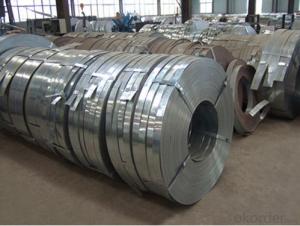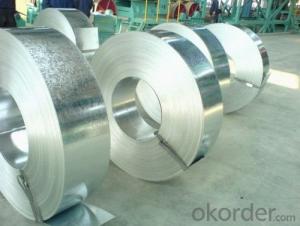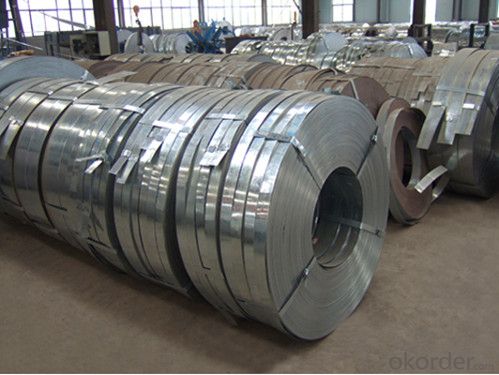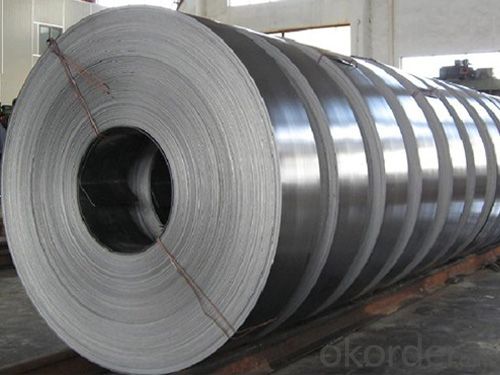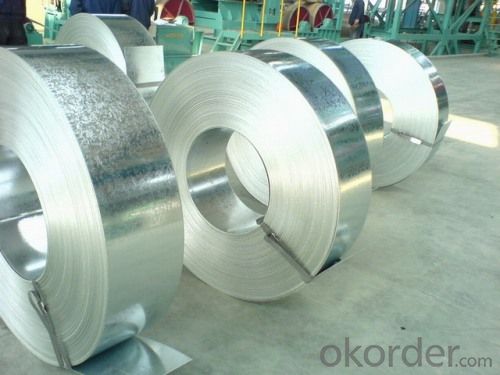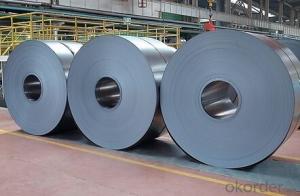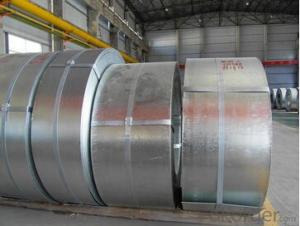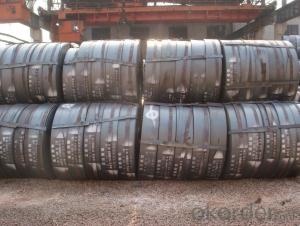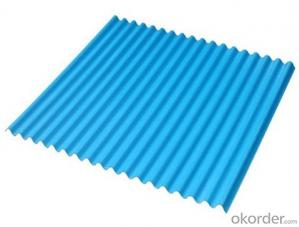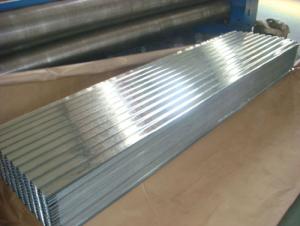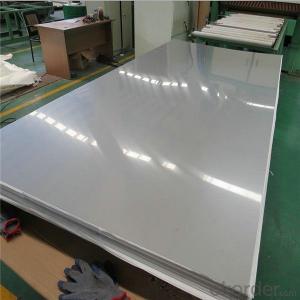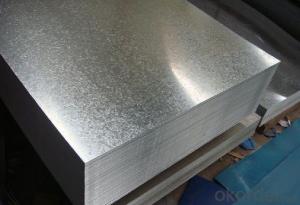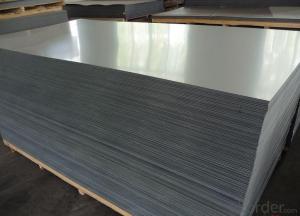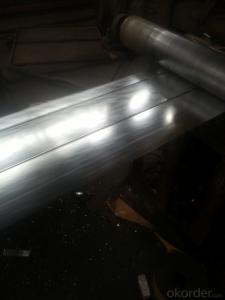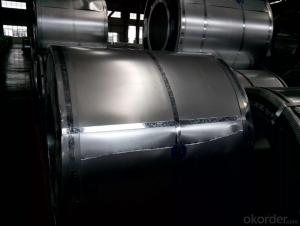Galvanized Steel Strip with High Quality-DX51D+Z 710*3.0mm
- Loading Port:
- China main port
- Payment Terms:
- TT OR LC
- Min Order Qty:
- 50 m.t
- Supply Capability:
- 10000 m.t/month
OKorder Service Pledge
OKorder Financial Service
You Might Also Like
Galvanized Steel Strip with High Quality-DX51D+Z 710*3.0mm
Product Description:
Specifications:
Thickness: 3.0mm
Width: 710mm
Material: DX51D+Z
ID: 508mm or 610mm
Spangle: Regular spangle or zero spangle
Surface treatment: chromated or no chromated; oiled or no oiled.
Advantages of Galvanized Steel Strip with High Quality-DX51D+Z 710*3.0mm:
1. Uniform coating;
2. Strong adhesion;
3. Strong corrosion resistant ability
Usage of Galvanized Steel Strip with High Quality-DX51D+Z 710*3.0mm:
1. Making pipes, like Greenhouse tubes, drinking water pipe, heating pipe, gas pipe and so on;
2. Used in automobile;
3. Used in construction;
4. Used in agriculture, fishery and so on.
FAQ of Galvanized Steel Strip with High Quality-DX51D+Z 710*3.0mm:
Q1: How soon can we receive the product after purchasement?
A1: Within three days of placing an order, we will begin production. The specific shipping date is dependent upon international and government factors, but is typically one month-two months.
Q2: How do you guarantee the quality of our products?
A2: We have established an advanced quality management system which conducts strict quality tests at every step, from raw materials to the final product. At the same time, we provide extensive follow-up service assurances as required.
Q3: The prices are invoicing on theoritical weight or on actual weight?
A3: We can do it in both manners, according to the customers' request.
Images of Galvanized Steel Strip with High Quality-DX51D+Z 710*3.0mm:
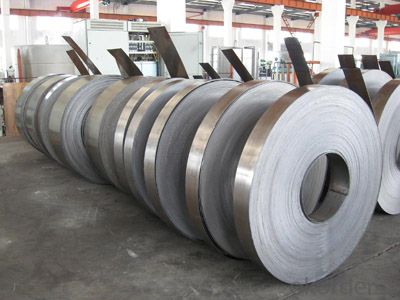
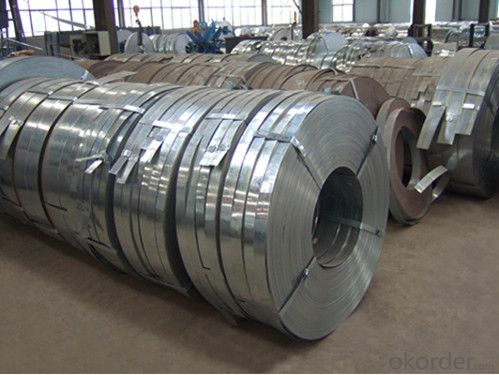
*If you would like to get our price, please kindly inform us the standard/material, specifications and quantity. Thank you very much for your attention.
- Q: Do steel strips come in different lengths?
- Yes, steel strips come in different lengths, typically ranging from a few inches to several feet, depending on the specific requirements and applications.
- Q: How are steel strips used in the manufacturing of escalators?
- Steel strips are used in the manufacturing of escalators to provide essential structural support, as they are strong and durable. These strips are typically used to construct the framework of the escalator, including the steps, handrails, and balustrades, ensuring the overall stability and safety of the escalator system.
- Q: Can steel strips be used for making small electronic components?
- Yes, steel strips can be used for making small electronic components.
- Q: What are the different methods of surface preparation for steel strips?
- There are several methods of surface preparation for steel strips, including mechanical cleaning, chemical cleaning, and abrasive blasting. Mechanical cleaning involves using tools such as wire brushes or sandpaper to remove dirt, rust, and other contaminants from the surface. Chemical cleaning involves using solvents or acids to dissolve or loosen any contaminants on the surface. Abrasive blasting, also known as sandblasting, uses high-pressure air or water to propel abrasive materials onto the surface, effectively removing rust, paint, and other coatings. These methods ensure that the steel strips are properly cleaned and ready for further processing or application of protective coatings.
- Q: What are the common defects found in steel strips?
- Some common defects found in steel strips include surface defects like scratches, pits, and scale, as well as internal defects such as cracks, voids, and segregation. Other common defects may include edge deformation, wavy edges, and thickness variations.
- Q: How do steel strips contribute to optical properties in various applications?
- Steel strips can contribute to optical properties in various applications by providing structural support and stability to optical devices. They can be used as a base material for mirrors, lenses, and other optical components, ensuring that the optical elements maintain their shape and alignment. Additionally, steel strips can be utilized for mounting and securing optical elements, preventing any undesired movement or distortion that could negatively impact the optical performance.
- Q: How are steel strips used in the chemical industry?
- Steel strips are commonly used in the chemical industry for various purposes such as packaging, sealing, and supporting equipment and machinery. They are used to wrap and protect chemicals, ensuring safe transportation and storage. Additionally, steel strips are used in the construction of chemical processing equipment and tanks due to their durability, strength, and resistance to corrosion.
- Q: How do steel strips compare to other materials in terms of cost and performance?
- Steel strips are generally cost-effective compared to other materials, such as aluminum or titanium, due to their abundance and ease of manufacturing. In terms of performance, steel strips offer excellent strength, durability, and corrosion resistance, making them highly versatile for various applications across industries.
- Q: How do steel strips contribute to the strength of structures?
- Steel strips contribute to the strength of structures in several ways. Firstly, steel is an incredibly strong and durable material, known for its high tensile strength. When steel strips are incorporated into a structure, they provide reinforcement and support, helping to bear heavy loads and resist external forces such as wind or earthquakes. This reinforcement helps to prevent deformation or collapse of the structure, ensuring its stability and longevity. Additionally, steel strips can be strategically placed in key areas of a structure to distribute and transfer loads more efficiently. By acting as load-bearing components, they can effectively transfer the weight and stress from one area to another, preventing localized points of weakness or failure. This distribution of load helps to evenly distribute the forces acting on the structure, enhancing its overall strength and stability. Moreover, steel strips are often used as tension members in structures, such as beams or columns. Due to their high tensile strength, they are able to resist pulling forces and prevent the structure from being pulled apart. This is particularly crucial in structures that might experience high tension forces, such as bridges or tall buildings, where the steel strips help to counteract the effects of gravity and keep the structure intact. Furthermore, steel strips are resistant to corrosion and degradation, making them highly suitable for long-term structural applications. This durability allows structures to maintain their strength and integrity over time, reducing the need for frequent repairs or replacements. The inclusion of steel strips in the construction process ensures that the structure remains robust and resilient for years to come. In conclusion, steel strips greatly contribute to the strength of structures by providing reinforcement, load distribution, tension resistance, and durability. Their integration helps to ensure the stability, safety, and longevity of various types of structures, from buildings and bridges to infrastructure and industrial facilities.
- Q: Can steel strips be welded?
- Yes, steel strips can be welded. Welding is a common method used to join steel strips together to create various structures or components.
Send your message to us
Galvanized Steel Strip with High Quality-DX51D+Z 710*3.0mm
- Loading Port:
- China main port
- Payment Terms:
- TT OR LC
- Min Order Qty:
- 50 m.t
- Supply Capability:
- 10000 m.t/month
OKorder Service Pledge
OKorder Financial Service
Similar products
Hot products
Hot Searches
Related keywords
